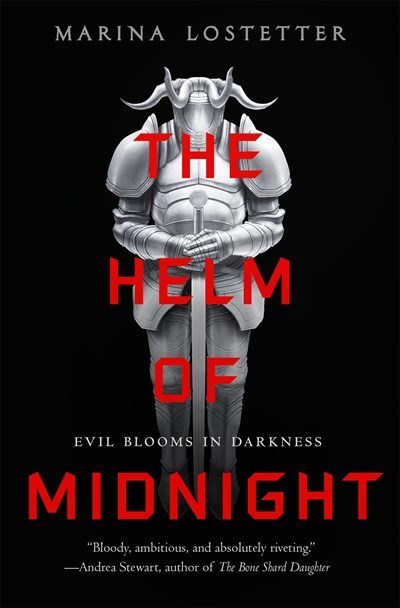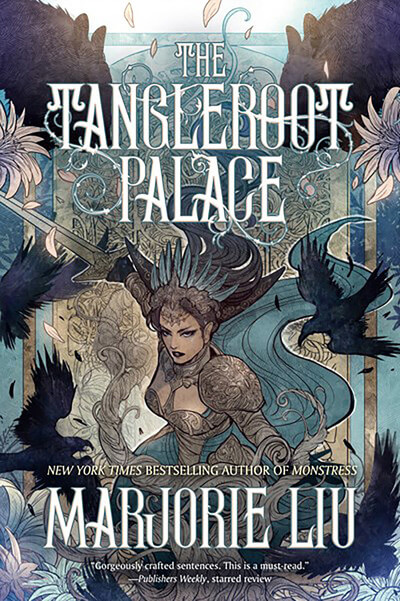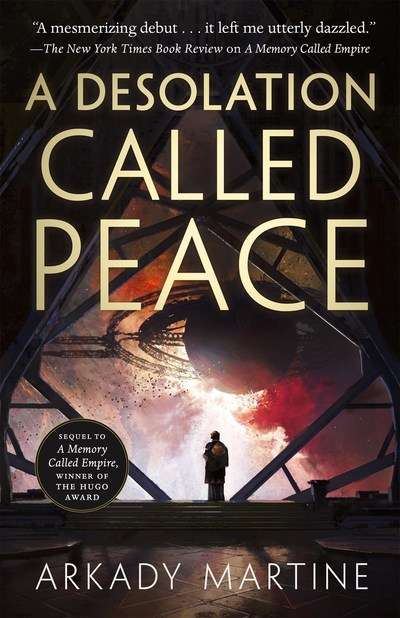In Empress of Forever, Max Gladstone’s riotous new science-fiction adventure, tech genius Vivian Liao is thrust into a battle for the universe’s independence after being unexpectedly transported to the farthest reaches of time and space. Gladstone’s novel has the structure of a portal fantasy (a subgenre best typified by The Chronicles of Narnia and Alice’s Adventures in Wonderland), except that the portal opens into a distant stretch of the galaxy rather than a magical world. Gladstone argues that the unexplored frontier of outer space provides an opportunity for modern authors to be part of a time-honored literary tradition.
Where can we go a-Questing?
In the fourteenth century, a Florentine poet, scholar and politician could find himself midway along his life’s journey, lost and in a wood, and discover in that darkness the gates of hell and the long winding path to the Celestial Rose. The cave that led to Dante’s hell might not be found on any map, but a wanderer reading his poem could suppose that maybe over this hill, through this copse of gnarled trees, might stand the yawning portal. At any turn in a sufficiently unknown place, they might slip into a story-space, one of those strange realms where the rigid daily progress of events gives way to the heightened, analogically realm of magic and revelation.
In Spain a hundred years later, the world felt too mapped for giants and chivalry. Cervantes writes of a madman Don Quixote in a late medieval social world so known, so observed, so mapped, that it could not possibly contain chivalric quests and wicked magicians. Don Quixote’s quest-land—where he quests after wizards and grails, slays monsters and jousts with wicked knights—that quest-land must not exist for it to exist at all. He takes part in stories that could never have happened and yet centuries later, they remain instantly relatable and comprehensible to any reader of fantasy romance
Cervantes mocks this invisible world, rendering golden helmets as shaving basins and ladies of legendary beauty as tavern wenches—but he also recognizes that Don Quixote’s realm offers meaning, clarity, revelatory power, even though it is absurd. Even after Don Quixote’s “cure,” he cannot long survive without constructing for himself another fantasy—this time using the forms of the pastoral.
No organism, as Shirley Jackson would write centuries later, can long exist under conditions of absolute reality. Even larks and katydids are supposed, by some, to dream.
The great inner moments of life—revelation and transformation, confrontation with our darkest fears, attainment of the divine, the rapture and pain of true love or the dissolution of the self—are as real as rabbits. We know they exist. We encounter them and are destroyed and changed. Even when we are not in their grip we see them at the edge of the shadows. But when we try to approach them head on, to speak or write about them, they hop back from our clumsy advance, scamper to a safe distance, and resume their quivering vigil, watching us watch them. One woman’s quest for inner grace—for relief from the chains she has forged around himself—can only indirectly be captured by the sharp realism that refuses to dive into the quivering mess of myth and memory that underlies our shared experience of this bewildering thing we like to call reality, so named because it makes us feel better. But we do have tools to tell stories about that search. All we need to do is go off the edge of the map, where we can find knights, and a wood, and a Grail, and a wounded King.
In the Tang dynasty, a monk called Xuanzang set out from the Imperial Capitol in the city now called Xi’an. He traveled west to India through places now called Xinjiang and Tibet. He left behind a glittering and literate Imperial court, the height of global civilization of the age, a place where he enjoyed patronage and support, to travel a Silk Road ruled by no empire, awash with bandits and hostile strangers. As a Buddhist monk, he brought few comforts with him.
Why make such a long and brutal voyage? Why leave friends and Emperor? He sought scriptures. He sought the salvation of the world and the liberation of all sentient beings. A new form of Buddhism had filtered into Tang Dynasty China across the Himalayas—building a more political and communal vision of Buddhist practice in the person of the bodhisattva, a character who, having achieved liberation from the world, remains within it to help set others free. This new tradition fascinated, but the Emperor wanted to study its sources firsthand—so he commissioned Xuanzang to go West, study, and bring back an authentic copy of the scriptures of this “Great Vehicle” (which was what its originators called it, being savvy marketers in addition to holy men).
So Xuanzang made his voyage through what Tang writers at the time thought were barbarian lands, reached India, studied with masters, learned Sanskrit, copied sutras by hand and translated them into Chinese, and, after many years, returned—his mission a success—to a grateful Emperor.
This is history on a mythic scale. But as the history turned into story, the stark exterior image of a monk traveling with minimal escort over barren vistas, studying languages in foreign lands, unfurled into the multicolored petals of myth.
Xuanzang’s quest was a grand one—so in Wu Cheng’en’s retelling Journey to the West, its internal aspects gained magical incident and mythic resonance. The monsters of danger and temptation that plague anyone of deep commitment became demon kings and seductive immortals, evil Taoists, escaped alchemical experiments. The man’s own profound internal drives emerge from his person, and take on form: animal demigod disciples, rich in mystic power, each corresponding to a different feature of the psyche, their deep personal conflicts standing in between Xuanzang and his westbound Quest.
Once Xuanzang steps beyond the bounds of known, stable Tang China, anything can happen—well, not quite. A different set of things can happen, a different set of rules apply. To understand Xuanzang’s pilgrimage on foot, to understand its scale and consequence and the range of difficulties he faced within his heart, Wu teases out around the walking man a world of Monkey Kings and voracious pig gods and spider immortals, ribald and rich and vast as any soul.
But where, in our extensively Google Mapped world, are we to go that could be peopled with magic, monstrosity and transformation, as was Xuanzang’s Journey West? In what dark wood might we lose ourselves to find those gates with the famous words above them, and Virgil ready to lead us down? We live in Cervantes’ world more than Dante’s or Wu Cheng-en’s. There’s no beyond-the-edge-of-the-map left.
Tolkien, among others, answered this challenge by creating a whole other realm in which his dramas could play out, in which men walking together through an age-ending war could be the pivot of history. But the subcreated fantasy world is, by definition, a place where we cannot go. No one, midway along their life’s journey, finds themselves lost and in Middle Earth. (At least, outside of fan fiction.)
Also, the subcreated fantasy is caught in a finger trap. The tale-teller must create working systems and societies for our heroes to pass through, lest the illusion shatter. Who grows the grain here? Who might these traders trade with? Why might one build a castle there? The systems and maps and justifications that orient readers all cut against the drive to create a great unknown, a realm of transformation. The kind of tales I’m talking about here start with characters we know and drive them off the map. Epic fantasies, as a rule, start with maps.
How can we turn off the edge of the map? Where can our spirits unfold to their full mythic scope? Each genre offers its own answer. Through the gate, the door, the fairy ring, to Oz or Narnia or Roland’s world, says portal fantasy. To the great silent spaces behind the upstairs neighbors’ apartment doors, says urban fantasy. And to the shadows—in the closet, the woods, the long-shuttered house, our dead parents’ attic, the tunnels beneath our nation—says horror. (This, by the way, is why My Neighbor Totoro remains firmly locked in my heart as Miyazaki’s great horror flick.)
But each of these options has a built-in limit. As we grow up, we realize that the wardrobes of our youth did not, in fact, lead to Narnia. Only as a child can we truly believe that the back of our uncle’s wardrobe might lead anywhere interesting. And while that silent neighbor might be a vampire, soon the strictures of logic and urban space constrain the space available for the adventure. (How does she feed? No city has that many murders. Could there be a society of vampires? If so, how do they operate?)
But space—SPACE! It’s up there, known through the pinholes of astrophysics and high-powered telescopes. But the pinholes are small, and space is huge. Our science, we know, is not complete—and there’s the edge of the map, beyond which “here be dragons.” What little we know of what is up there—black holes of a million solar masses, quasars and pulsars, sprawling nebulae, neutron stars and gas giants, supernovas smelting gold and galaxies smashing one another to oblivion, the endless stellar bestiary of weird and awesome phenomena (Dark Matter! Darker Energy!) offers a vast unrolling space where character can unfold and reveal itself in the grammar of the Quest and Adventure.
The SPACE of the Quest, rich with alien life and faster than light travel and planet-smashing super weapons—may be as deeply unlikely as Herodotus’ giant ants. But that’s just what’s so great about SPACE! We don’t know any of these things to be false yet. So, as long as the texture of reality is preserved, SPACE remains always a place we could encounter wonders, a dark and unknown wood we could wander if only we turned in a new direction—straight up, into the stars.
I’ve written many books set in an alternate fantasy world, which works for me like a funhouse mirror—curved and distorted, magnifying aspects of our own reality that are often invisible or overlooked. (Though less so now than they were when I started writing Three Parts Dead in 2009.) But a reflection, even a dark one, is a closed space. Reach out to touch it, and you touch cool glass. Strike it, and you shred yourself.
I wanted my new book, Empress of Forever, to be a door, like Journey to the West or the grail stories. Vivian Liao, our near future protagonist, would scoff at being called an “everywoman” (and she’d be right to), but any of us could find ourselves on her path, blinking and afraid, in a brilliant new world—and set out to get things done. Vivian Liao moves beyond the map’s edge into Oz, the West, space, the antipodes of the soul. She will find new friends and bitter enemies; she will save worlds and break them and learn more about herself than she thought there was to know. Starships burst in a singularity sky. Pirate queens steal suns, monks sift the ruins of countless worlds for shreds of enlightenment, and she will face them all.
It’s a marvelous world out there. Come on. Let’s go off the edge of the map.
ALSO IN BOOKPAGE: Read our review of Empress of Forever.



































